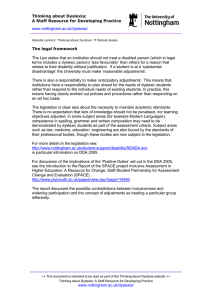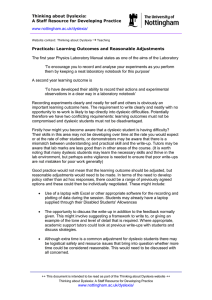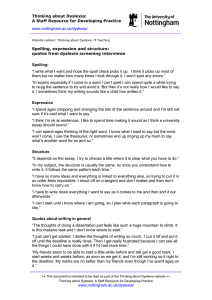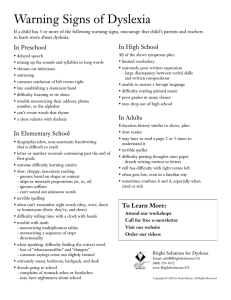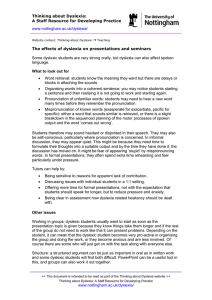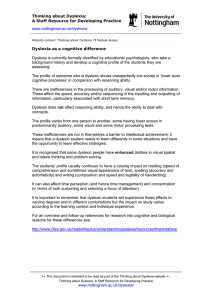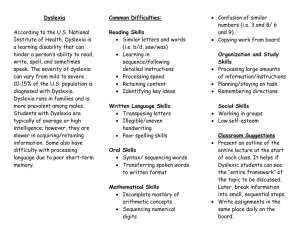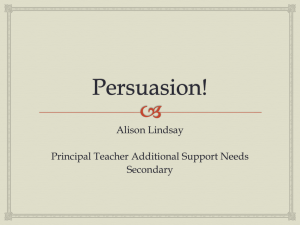Thinking about Dyslexia: A Staff Resource for Developing Practice
advertisement
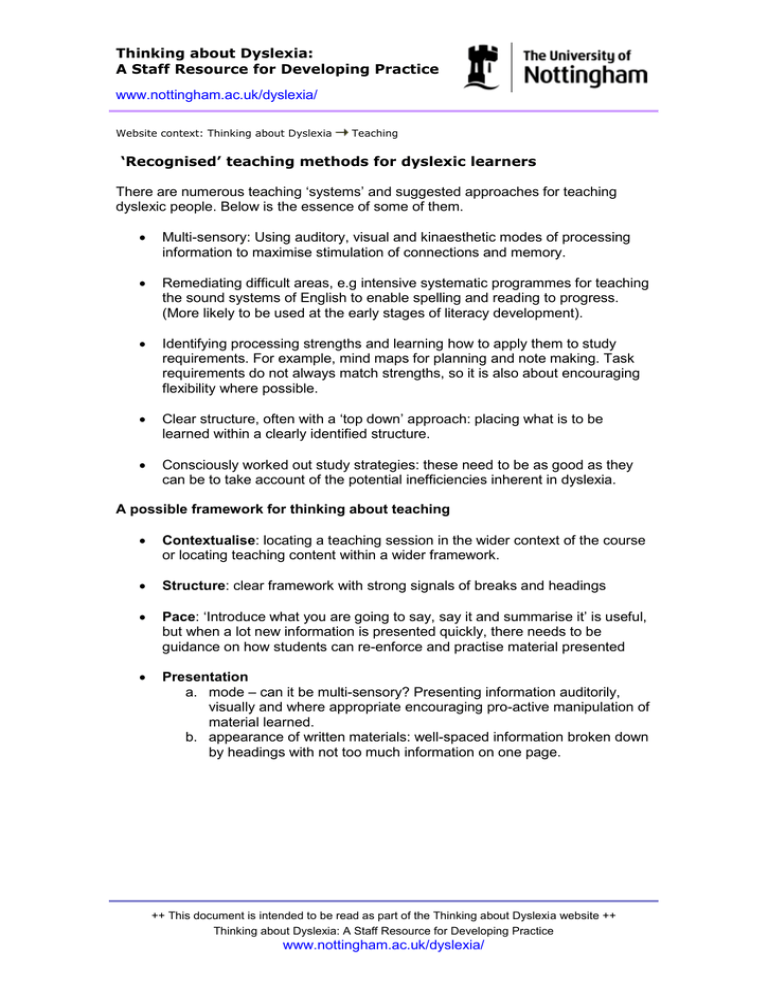
Thinking about Dyslexia: A Staff Resource for Developing Practice www.nottingham.ac.uk/dyslexia/ Website context: Thinking about Dyslexia Teaching ‘Recognised’ teaching methods for dyslexic learners There are numerous teaching ‘systems’ and suggested approaches for teaching dyslexic people. Below is the essence of some of them. Multi-sensory: Using auditory, visual and kinaesthetic modes of processing information to maximise stimulation of connections and memory. Remediating difficult areas, e.g intensive systematic programmes for teaching the sound systems of English to enable spelling and reading to progress. (More likely to be used at the early stages of literacy development). Identifying processing strengths and learning how to apply them to study requirements. For example, mind maps for planning and note making. Task requirements do not always match strengths, so it is also about encouraging flexibility where possible. Clear structure, often with a ‘top down’ approach: placing what is to be learned within a clearly identified structure. Consciously worked out study strategies: these need to be as good as they can be to take account of the potential inefficiencies inherent in dyslexia. A possible framework for thinking about teaching Contextualise: locating a teaching session in the wider context of the course or locating teaching content within a wider framework. Structure: clear framework with strong signals of breaks and headings Pace: ‘Introduce what you are going to say, say it and summarise it’ is useful, but when a lot new information is presented quickly, there needs to be guidance on how students can re-enforce and practise material presented Presentation a. mode – can it be multi-sensory? Presenting information auditorily, visually and where appropriate encouraging pro-active manipulation of material learned. b. appearance of written materials: well-spaced information broken down by headings with not too much information on one page. ++ This document is intended to be read as part of the Thinking about Dyslexia website ++ Thinking about Dyslexia: A Staff Resource for Developing Practice www.nottingham.ac.uk/dyslexia/
